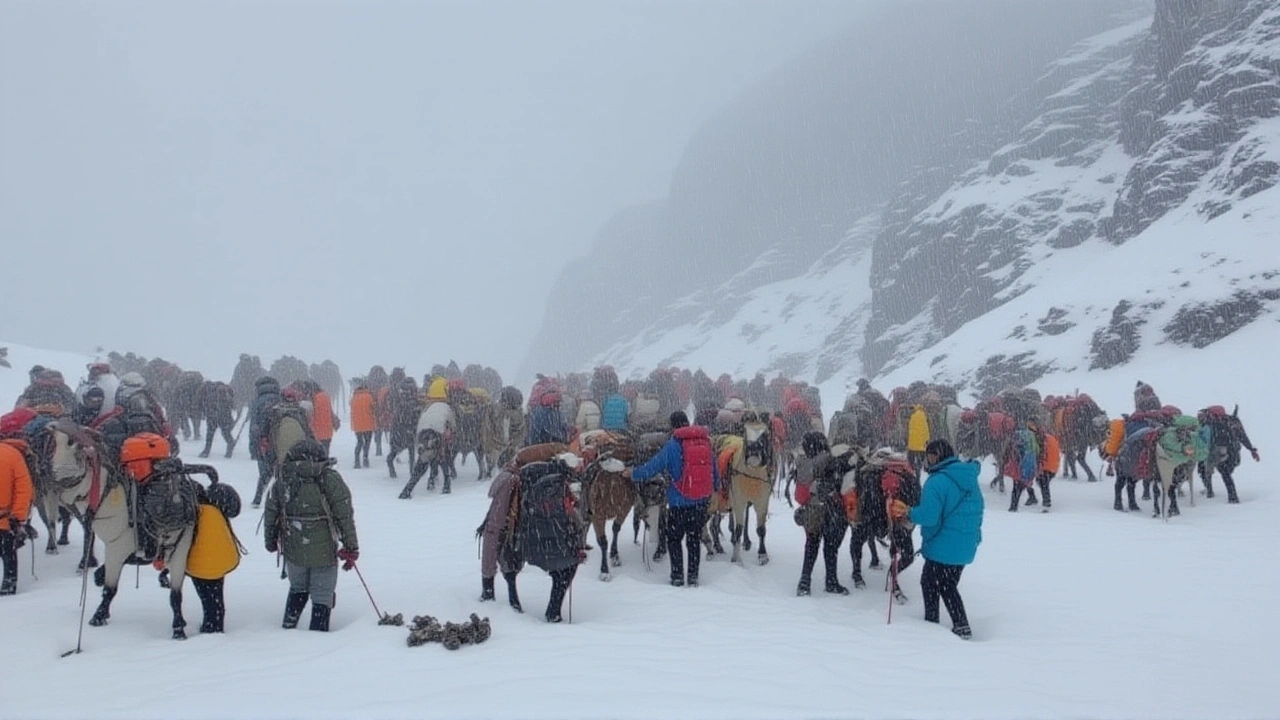High Altitude Hikers: Gear, Training, and Safety
When talking about High Altitude Hikers, people who trek above 2,500 m where thin air and rugged terrain demand special preparation. Also known as high‑altitude trekkers, they face unique challenges that differ from low‑land walks. One of the biggest hurdles is Altitude Sickness, a physiological response to low oxygen levels causing headaches, nausea, and fatigue. It’s often called acute mountain sickness. Proper Acclimatization, the gradual process of letting the body adapt to reduced oxygen can reduce risk dramatically. Finally, reliable Mountain Gear, equipment designed for extreme cold, wind, and steep terrain is the foundation for any successful summit attempt.
Key Considerations for High Altitude Hiking
High altitude hikers require a solid plan that blends physical readiness, equipment, and environmental awareness. Acclimatization schedules often involve climbing high during the day and sleeping low at night, allowing the body to produce more red blood cells. This practice directly influences the likelihood of altitude sickness and improves overall stamina. Knowing how altitude sickness influences performance helps hikers adjust pace and rest periods, keeping the experience enjoyable rather than harmful.
Choosing the right mountain gear is more than a fashion statement; it’s a safety issue. Layered clothing systems that manage moisture, insulation, and wind protection keep core temperature stable. Footwear with aggressive tread and ankle support prevents slips on icy ridges. Packs with integrated hydration systems reduce the need to stop for water, which conserves energy and maintains proper altitude adaptation.
Navigation at high elevations demands tools that work when satellite signals are weak and weather turns quickly. A reliable GPS unit paired with topographic maps offers redundancy; if one fails, the other guides you. Compass skills remain essential because magnetic interference can affect electronic devices. Trail markers become sparse above the tree line, so hikers often rely on natural landmarks—rock formations, ridgelines, and snow patches—to stay on course.
Physical training before a high‑altitude trek boosts confidence and reduces injury risk. Aerobic workouts that simulate low‑oxygen conditions, such as interval training or using elevation masks, improve cardiovascular efficiency. Strength training focused on the lower body, core stability, and grip strength prepares the muscles for steep ascents and heavy packs. Flexibility work and mobility drills keep joints supple, making it easier to navigate rocky terrain.
Safety planning extends beyond gear and fitness. Emergency protocols should include a satellite messenger or personal locator beacon, especially in remote areas where cell service is unavailable. Knowing the symptoms of severe altitude illness—confusion, loss of coordination, or breathlessness at rest—allows for quick descent or evacuation. Always inform someone of your itinerary, expected return time, and emergency contacts.
By understanding how altitude sickness, acclimatization, gear, navigation, and training interrelate, high altitude hikers can tackle lofty peaks with confidence. Below you’ll find a curated set of articles that dive deeper into each of these topics, offering practical tips, gear reviews, and real‑world stories from the trail. Use these resources to fine‑tune your next adventure and stay safe above the clouds.
Blizzard Traps Hundreds on Everest; Rescue Teams Battle Snow in Tibet
A sudden blizzard on Mount Everest trapped nearly 1,000 hikers in Tibet; over 350 rescued while 200 remain stranded at 14,000 ft. Rescue teams race against the storm.
Read More

